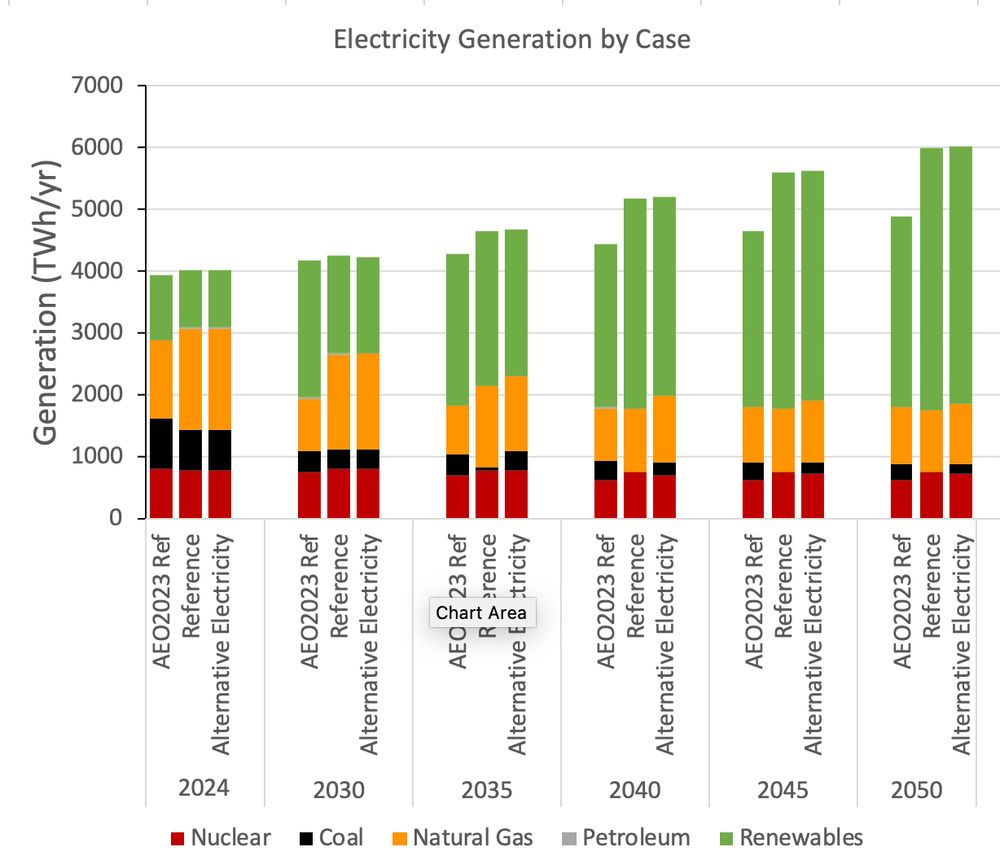





Here’s renewables. (Unfortunately, wind and solar are lumped together in the tables.) Note the marked increases in renewable generation and slowdown in later years when the IRA tax credits expire.

Here’s renewables. (Unfortunately, wind and solar are lumped together in the tables.) Note the marked increases in renewable generation and slowdown in later years when the IRA tax credits expire.

Renewables, mostly solar and wind, are an increasing share of the electricity mix. End-use electrification is also increasing. What does that have to do with primary energy?

Renewables, mostly solar and wind, are an increasing share of the electricity mix. End-use electrification is also increasing. What does that have to do with primary energy?

In the short-term, using our existing models, we’re examining a wider range of future scenarios and applying cones of uncertainty to better characterize the range of possible future outcomes.


In the short-term, using our existing models, we’re examining a wider range of future scenarios and applying cones of uncertainty to better characterize the range of possible future outcomes.

Total CO2 emissions reflects the net effect of cheap natural gas and renewables deployment, which led to the accelerated retirement of coal.
Here's total energy-related CO2 emissions in million metric tons using AEO editions 2005-2023:
Total CO2 emissions reflects the net effect of cheap natural gas and renewables deployment, which led to the accelerated retirement of coal.
Here's total energy-related CO2 emissions in million metric tons using AEO editions 2005-2023:

EIA projected capital costs for wind and solar were too high, as indicated here.

EIA projected capital costs for wind and solar were too high, as indicated here.
(all modeled cases; black line is actual)
(all modeled cases; black line is actual)

TL;DR To address emerging energy issues, we need a next generation model that is modular, flexible, transparent, and robust.

TL;DR To address emerging energy issues, we need a next generation model that is modular, flexible, transparent, and robust.


🧵👇

🧵👇
tl;dr: Expenditures are expected to be about the same as last winter. Lower prices compensate for a slightly colder winter. 🔌💡
See more here:
www.eia.gov/outlooks/ste...

tl;dr: Expenditures are expected to be about the same as last winter. Lower prices compensate for a slightly colder winter. 🔌💡
See more here:
www.eia.gov/outlooks/ste...


